CPR Steps – It’s As Easy As 1 – 2 – 3
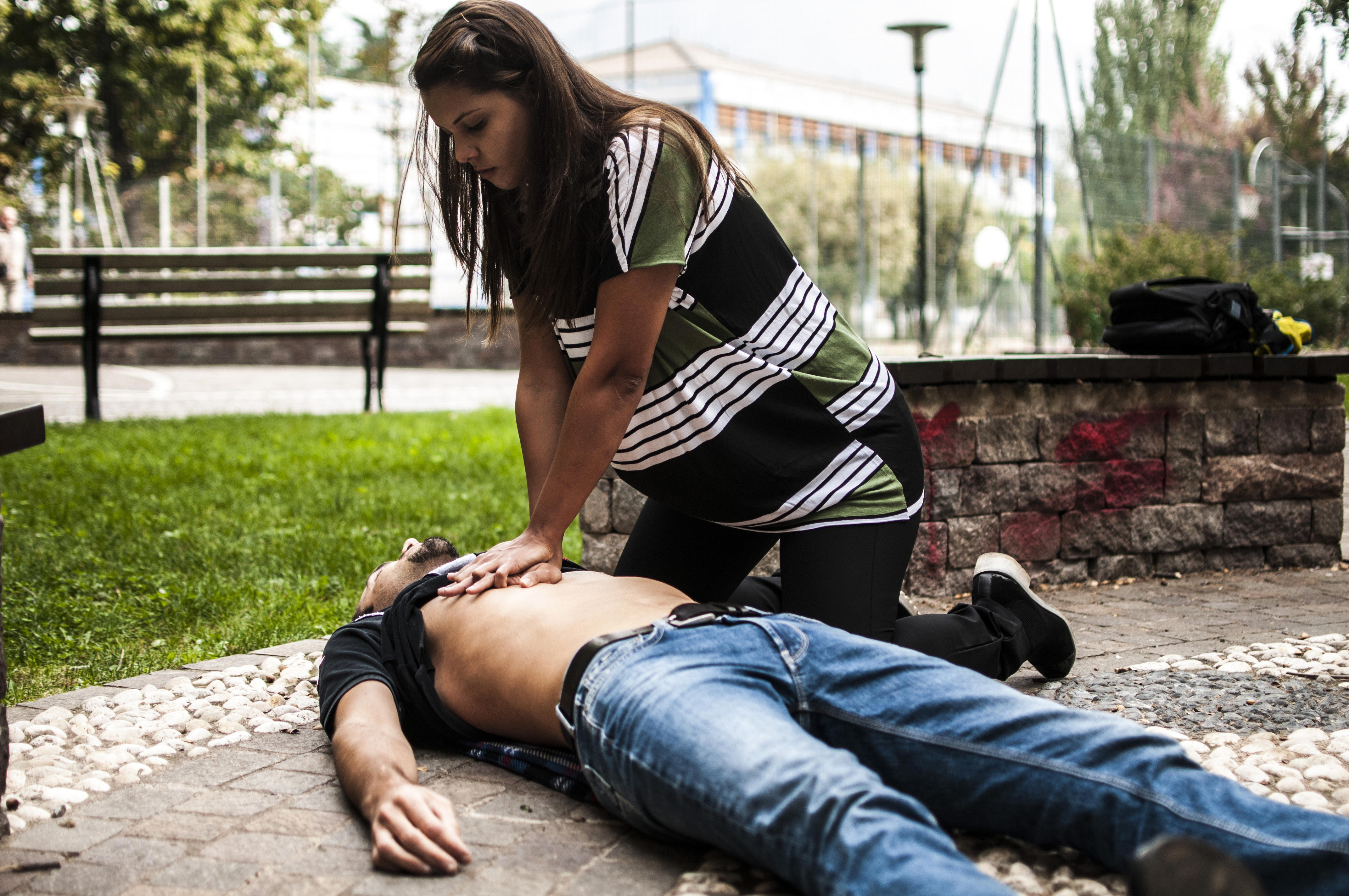
If you were ever confronted by an unresponsive, unconscious person would you know what to do? Most people know to then check for signs of life (checking for a response and if the casualty is breathing). But, what if the casualty doesn’t seem to be breathing or is intermittently gasping for air? These are critical signs that CPR must be administered immediately. Follow our CPR steps to ensure you’re best prepared in case of a cardiopulmonary emergency.
CPR Explained
CPR should be administered when the heart stops beating independently. As soon as the heart stops beating to a normal, healthy rhythm it is only a matter of minutes before irreversible damage is caused.
If the heart is not beating and CPR is not given, in just four short minutes the person will become brain dead from a lack of oxygen circulation.
CPR steps involve compressions to the chest and breaths to inflate the lungs. This stimulates blood and oxygen circulation in the body, which is critical to the livelihood or major organs such as the heart and brain.
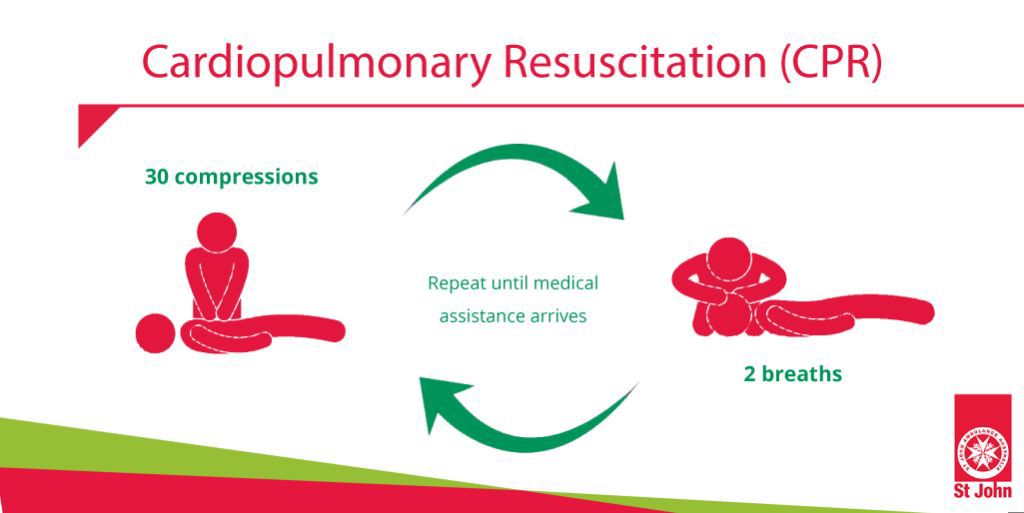
When Should You Apply The CPR Steps?
If a person is unconscious and showing no signs of breathing you should always apply CPR. If a person does not require CPR, this will likely become clear once you begin and will not cause any permanent damage.
Possible Reasons Why Someone May Need CPR
The need for CPR can be prompted by a number of health events, accidents or injuries and it can occur anywhere, at any time, to anyone. Whether it’s at home, work, an event or out in the community, if the need for CPR arises, your assistance is critical to the persons chance of survival.
Unfortunately, when it comes to CPR many people have a fear of causing additional damage. A St John Ambulance (VIC) study revealed that in a workplace environment only 20.7% of people would be confident to provide First Aid methods, such as CPR, in an emergency.
It’s important to remember that any damage caused by CPR is superficial in comparison to the fatal outcome that is likely to occur if CPR is not provided when required.
Possible reasons people might require CPR include:
|
Sudden Cardiac Arrest |
Drug/alcohol overdose |
|
Choking |
Smoke inhalation |
|
Drowning |
Asphyxiation |
|
Electrocution |
CPR Myths Debunked
There are many reasons why people may hesitate to provide CPR in the case of a health emergency. Some common reasons that may come to mind, but are completely untrue include:
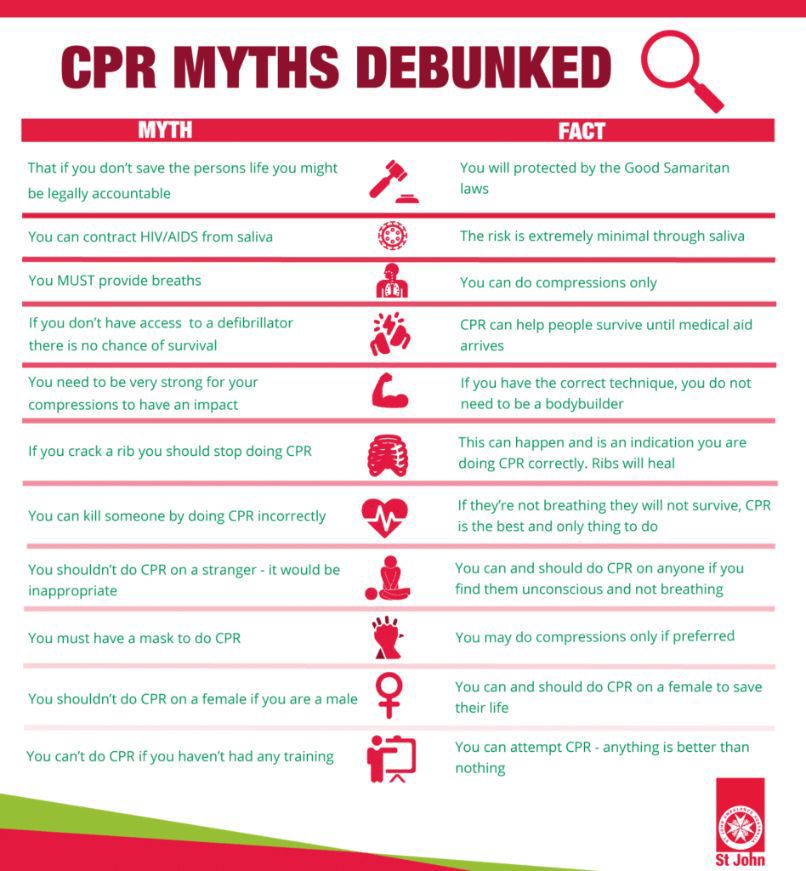
First Aid Management For CPR
If there is a casualty who is unresponsive and not breathing, always follow DRSABCD and call triple zero (000) for medical assistance immediately.
CPR Steps For Adults
- Kneel beside the casualty, one knee level with their head and the other with their chest
- Locate the lower half of the sternum in the centre of the chest
- Place the heel of your hand on the lower half of the sternum and place the heel of the other hand over the top
- Interlock the fingers of both hands
- Provide 30 compressions (pushing down 1/3 of the depth of the chest)
- Tilt head and lift chin to clear tongue from airway
- Provide 2 breaths (if you are comfortable to do so)
- Reposition your hands and provide 30 more compressions
- Continue compressions and breaths in a ratio of 30:2 until medical assistance arrives
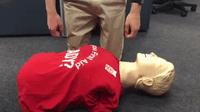
CPR Steps For Infants
- Place yourself vertically above the chest
- Position your index and middle finger over the lower half of the sternum (breastbone). Typically between the nipples
- Compress the sternum 1/3 of the depth of the chest
- Repeat 30 compressions at the rate of 100 compressions per minute
- Tilt head back slightly and lift chin to clear tongue from airway
- Position your mouth over the infants mouth and nose, breathe as normal (do not blow a powerful breath, this can damage the infants lungs)
- Turn your head to watch infants chest fall from breath and check for signs of air being exiting the lungs
- Continue compressions and breaths in a ratio of 30:2 until medical assistance arrives
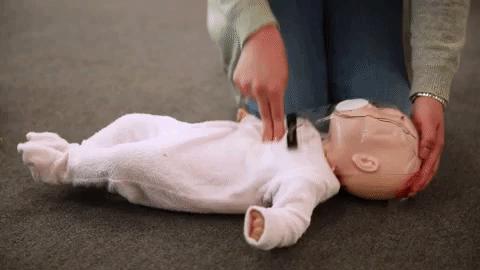
Note: if you are not comfortable providing breaths whilst administering CPR continue with compressions until medical assistance arrives
In an event where CPR is required it can be stressful and scary. But, if you have the ability to save someone’s life there really is no reason to not take action. We always say it’s better to attempt some CPR than none at all. In an instant, you could be the difference between another heartbreaking story of a preventable life lost or an empowering, heroic story of another life saved.
CPR performed by people of all shapes, sizes, fitness capabilities, education, background and age, saves lives. It’s that simple.
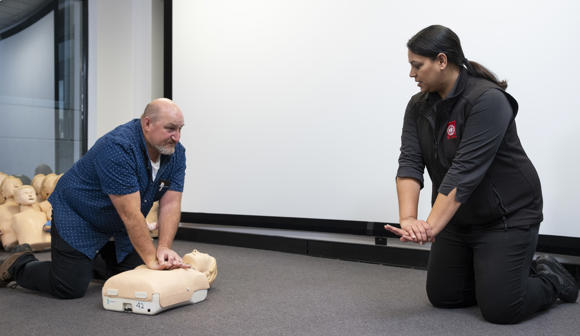
HLTAID009 PROVIDE CARDIOPULMONARY RESUSCITATION
Learn the skills to perform life-saving (CPR) on an adult, child or infant who is unconscious and not breathing normally.
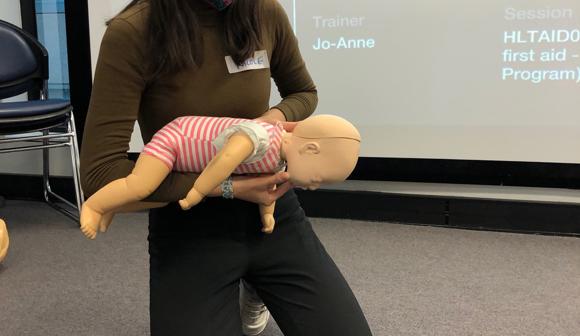
CARING FOR BABIES AND KIDS
4 Hour Face-to-Face
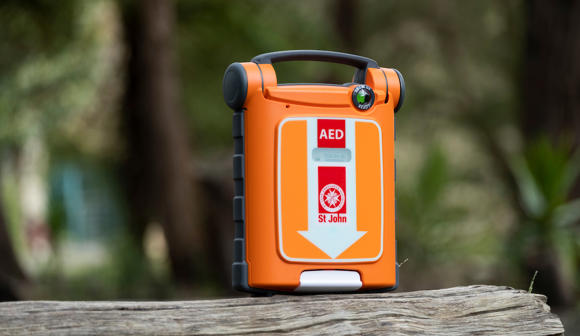
How to choose the right Defibrillator for you
Choosing a defibrillator can be hard. Read our list of things you should consider when choosing the right defibrillator for your needs.
